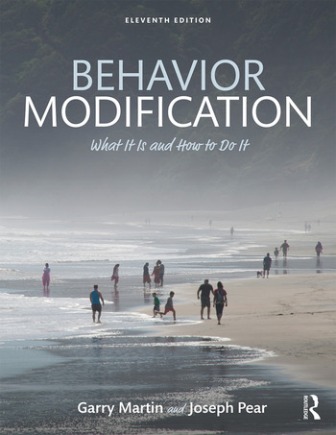Test Bank for Behavior Modification What It Is and How To Do It 11/E Martin
Test Bank for Behavior Modification What It Is and How To Do It, 11th Edition, Garry Martin, Joseph J. Pear, ISBN 9780815366546
Table of Contents
Part I: The Behavior Modification Approach
1. Introduction
2. Areas of Application: An Overview
3. Defining, Measuring, and Recording Target Behavior
4. Doing Behavior Modification Research
Part II: Basic Behavioral Principles and Procedures
5. Respondent (Classical, Pavlovian) Conditioning of Reflexive Behavior
6. Increasing a Behavior with Positive Reinforcement
7. Increasing Behavior with Conditioned Reinforcement
8. Decreasing a Behavior with Operant Extinction
9. Getting a New Behavior to Occur with Shaping
10. Developing Behavioral Persistence with Schedules of Reinforcement
11. Responding at the Right Time and Place: Operant Stimulus Discrimination and Stimulus Generalization
12. Changing the Control of a Behavior with Fading
13. Getting a New Sequence of Behaviors to Occur with Behavior Chaining
14. Differential Reinforcement Procedures to Decrease Behavior
15. Decreasing Behavior with Punishment
16. Establishing Behavior by Escape and Avoidance Conditioning
17. Respondent and Operant Conditioning Together
18. Transferring Behavior to New Settings and Making It Last: Programming of Generality of Behavior Change
Part III: Capitalizing on Operant Antecedent Control Procedures
19. Antecedent Control: Rules and Goals
20. Antecedent Control: Modeling, Physical Guidance, and Situational Inducement
21. Antecedent Control: Motivation
Part IV: Putting It All Together to Develop Effective Behavioral Programs
22. Functional Assessment of Causes of Problem Behavior
23. Planning, Applying, and Evaluating a Behavioral Program
24. Token Economies
25. Helping an Individual to Develop Self-Control
Part V: Behavior Therapy for Psychological Disorders
26. Behavioral Approaches to Psychotherapy: Cognitive Restructuring, Self-Directed Coping Methods, and Mindfulness and Acceptance Procedures
27. Psychological Disorders Treated by Behavioral and Cognitive-Behavioral Therapies
Part VI: A Historical Perspective and Ethical Issues
28. Giving it All Some Perspective: A Brief History
29. Ethical Issues




